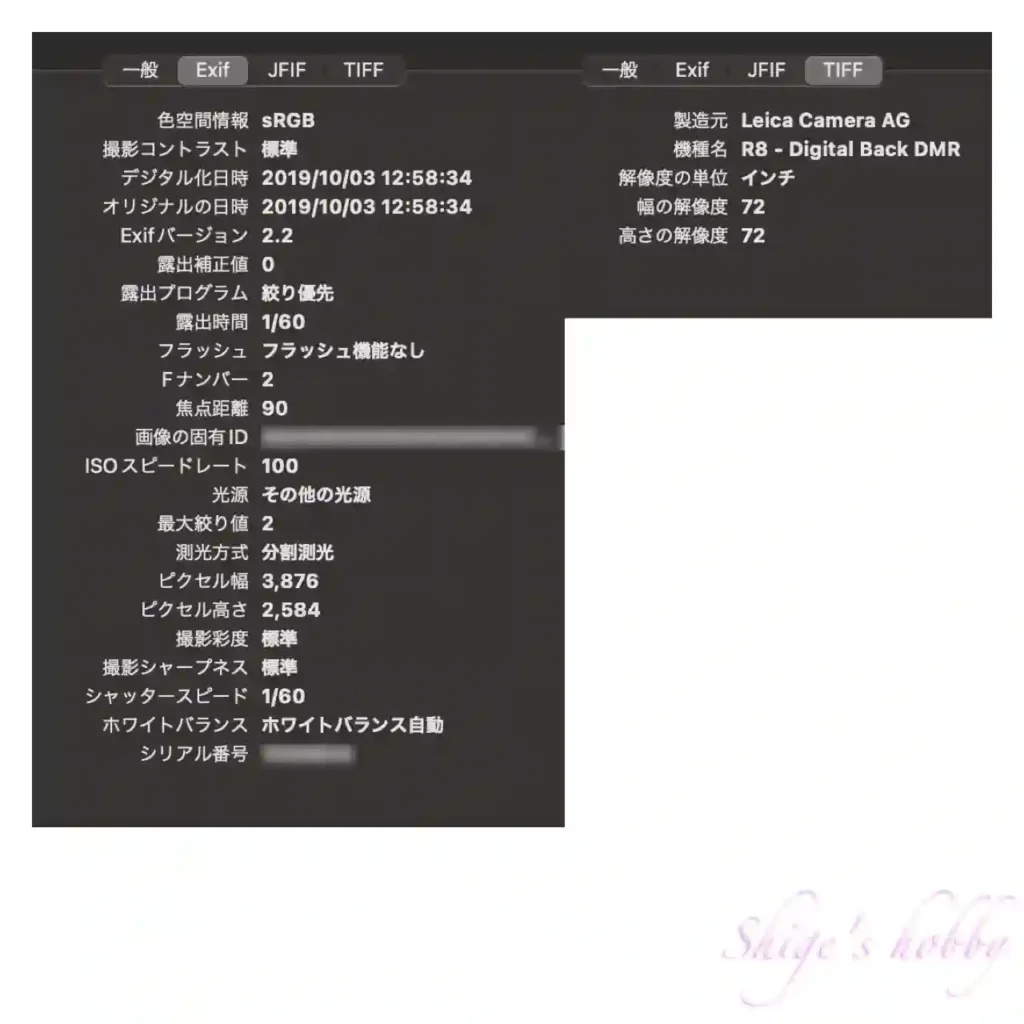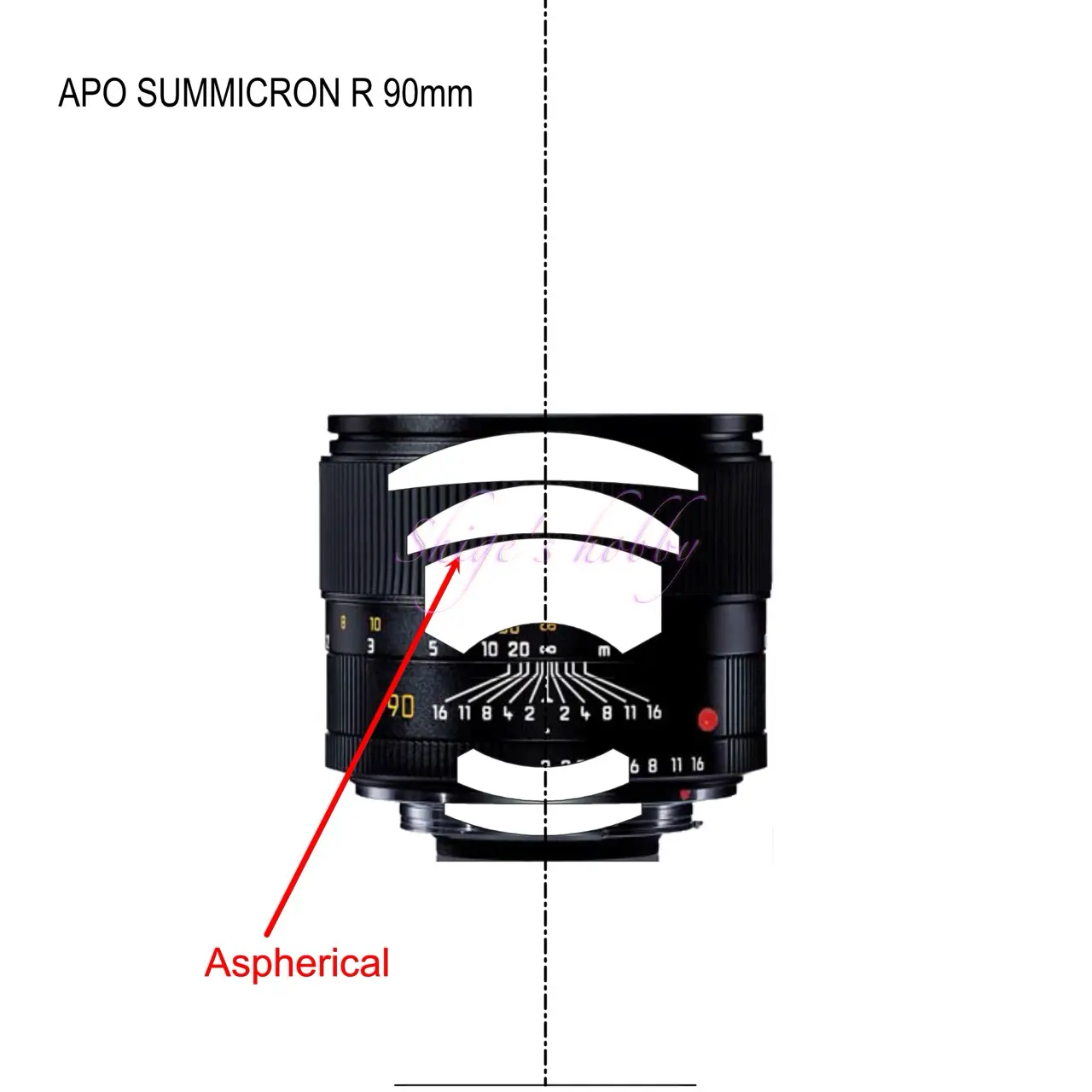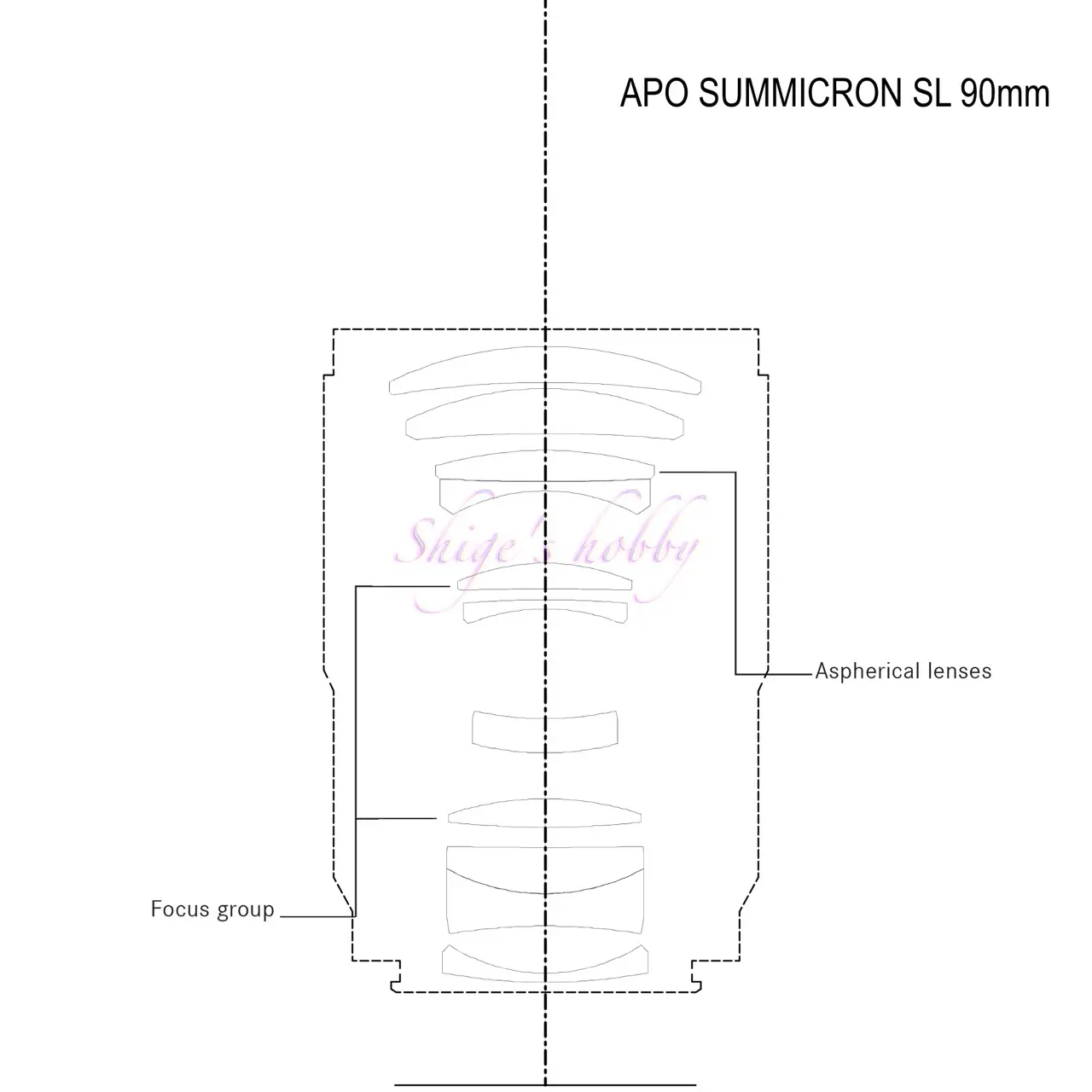Last updated on 2025-10-21
A review and photo examples of using the LEICA APO SUMMICRON R 90mm ASPH. with film SLR, digital SLR, digital rangefinder, mirrorless, and other cameras.
- Please see the disclaimer regarding advertising here.
- Italicized links in the text are advertisement links that take you to other sites.
Table of contents
Gallery
The following cameras were used to take the example photographs:
- LEICA R8 +KODAK ProImage100 +NIKON SUPER COOLSCAN4000
- LEICA R8 +Digital Module R(DMR)
- CANON EOS-1Ds MK III
- LEICA M typ240
- LEICA SL Typ601
- HASSELBLAD X2D-100C
Review
1.Overview
The APO SUMMICRON R 90mm ASPH. is a medium telephoto lens with a Leica R mount that was released in 2002.
The main specifications are as follows, and details are listed in the table.
- Aperture value: 2
- Lens construction: 5 elements in 5 groups
- 1 aspherical lens
- Aperture blades: 8
- Minimum focusing distance: 0.7m
- Filter diameter: E60/60mm
- Hood: Built-in hood
2.Usability
The Apo-Summicron R90’s image is flat across the entire screen, but has a sharp depiction at the focal plane.
The bokeh in front and behind is also impeccable, and among the several medium telephoto lenses I own, this is the lens I often choose when it’s important.
It is equipped with a retractable hood at the front of the lens barrel, but it is only extended to a modest extent and does not block light very well. However, it is resistant to backlighting and strange ghosting rarely appears, so I have never had any trouble with the built-in hood.
The lens barrel design has a straight shape with no bumps, which is common to the new generation of R-mount lenses, and is different from the Apo-Summicron M90’s design that tapers towards the mount.
The Apo-Summicron R90 is also about 180g lighter than the Summilux R 80mm, one of the popular lenses, so it balances well when attached to a small mirrorless camera.
The R-mount and M-mount Apo-Summicrons have the same structure. Before I got my hands on an R-mount APO-Summicron, I owned an M-mount APO-Summicron, so I had the luxury of owning both lenses for a while.
Looking at my past shooting results, I noticed that the M-mount tended to be sharp in the center and slightly softer around the edges, while the R-mount tended to be flat across the entire screen with a consistent sense of resolution, and I was surprised to see differences even with the same lens configuration.
I didn’t do a strict comparison of shooting, so it’s possible that this is just what I saw, or that it’s due to individual differences in the lenses.
The only difference in the specs of the two lenses is the minimum focusing distance, which is 0.7m for the R-mount and 1m for the M-mount.
For a medium telephoto lens with a focal length of 90mm, this difference of 0.3m is enough to differentiate them.


This lens was manufactured in 2,000 units over a two-year period from 2002 to 2003, making it a rare lens that rarely appears on the Japanese second-hand market. It occasionally appears on eBay, so it may be easier to obtain it via overseas routes.
It is important to note that overseas transactions have their own inherent risks, so it is difficult to think of them in the same category as domestic mail order sales.
As of 2025, it is possible to purchase new M-mount products, so if you are using them with a mirrorless camera, the M-mount version may be a good choice.
Mount Adapter
■Film SLR camera
Looking at the results of shooting with the APO SUMMICRON R 90mm ASPH. using a LEICA R8 and KODAK ProImage100, the graininess of the negative film and the high resolution of the lens’s full-face rendering are a perfect match.
Judging from the results with the negative film, it looks like the high resolution of the lens will be enjoyable when used with a grainy monochrome setting at around ISO 400.
The LEICA R8 film camera can focus without any problems from wide open aperture using the standard universal screen (14343).
■Digital SLR camera
When shooting with the APO SUMMICRON R 90mm ASPH. using the Digital Module R, the camera’s image sensor is smaller than 35mm film, resulting in a cropped image of the focal length multiplied by 1.37. A 90mm focal length is equivalent to a 123mm focal length in 35mm format.
Because the peripheral areas, where imperfections are more visible with a digital camera, are cropped, resulting in a higher-resolution image, beautifully reproducing the cat’s fur.
I had no trouble focusing the APO SUMMICRON R 90mm ASPH. using the DMR’s standard universal screen (14392). I rarely needed the optional microprism screen, which improves central focusing accuracy.
The DMR’s dedicated focusing screen features a square frame inside the screen to indicate the shooting range, as it is adjusted to fit the sensor’s smaller size than 35mm film.
When shooting with the DMR using a lens with a ROM terminal, the focal length, aperture setting, and other information are recorded in the Exif information. In the example below, you can see that the photo was taken at a focal length of 90mm and an aperture of F2. However, some lenses with ROM terminals have inconsistencies in the data transfer information to Exif, and the focal length or aperture value may not be transmitted, showing a discrepancy in specifications between the Leica analog and digital eras.

The Canon EOS 1Ds Mk-III is a 20-megapixel 35mm full-frame sensor camera, and the APO Summicron lens supports this resolution without any issues.
Since EOS series cameras are generally designed for autofocus, it’s easier to achieve the focus peak when using manual focus on high-end MINOLTA α cameras. However, the APO Summicron R 90mm ASPH. lens can be easily focused using the standard screen on the EOS-1Ds Mk-III and EOS-1D Mark-IV.
The rear lens element of the APO Summicron R 90mm ASPH. does not protrude much, so it works without any problems when attached to an EOS-1Ds MKIII via a mount adapter. Note that with R-mount wide-angle lenses, the rear end of the lens may interfere with the mirror box sensor, causing the camera to display Error 20 and making it unusable.
The EOS-1D Mark-IV and EOS 7D, which have smaller sensor sizes, can use this lens without any issues. The change in focal length due to sensor size is 1.3x (117mm) for the EOS-1D Mark-IV and 1.6x (144mm) for the EOS 7D.
■Digital rangefinder cameras and mirrorless cameras
The LEICA SL typ601 has a 24-megapixel 35mm full-frame sensor, which is about 20% more pixels than the Canon EOS 1Ds MK-III. The 20% increase in pixels is barely noticeable.
Both cameras are equipped with 24-megapixel sensors, and although the sensor sizes are different, both offer practically sufficient resolution and sharp edges.
When used with the digital mirrorless Leica SL typ601 and Leica’s genuine mount adapter, the Leica R-Adapter L (16076), focal length, aperture value, and other information are recorded in the EXIF. This is extremely useful for lazy people who don’t like to take notes.
With mirrorless cameras that have an EVF, the focus magnification function allows for more precise focusing than with SLR cameras.

Because the LEICA M typ240 is a rangefinder camera, it is not possible to check the focus position in the viewfinder with lenses other than those with M-mount lenses that are linked to the rangefinder. Even if an R-mount lens is attached to the camera via the Leica R adapter for M (14642), it will not be linked to the camera’s rangefinder.
As a result, in order to check the focus position, an external electronic viewfinder (EVF-2) must be attached.
When the LEICA M typ240 is equipped with the EVF-2, it operates in the same way as a mirrorless camera, but compared to when an M-mount lens is attached, the camera’s processing speed slows down due to the EVF processing, resulting in significantly slower shutter response.
Furthermore, when using the R adapter for M (14642), you can select registered R-mount lenses from the menu and record them in Exif. Lenses not registered in the menu cannot be added, so you will have to select a lens that is close to the original.
The HASSELBLAD X2D-100C is a mirrorless camera equipped with a medium-format digital sensor, which is larger than the sensor size of 35mm film.
The APO SUMMICRON R 90mm ASPH. has a wide image circle, fully covering the range of the 44*33mm medium-format digital sensor used in the HASSELBLAD X2D (X1D / X1DII / X907 / FUJI-GFX).
The focal length conversion factor for 35mm film is 0.8x, so if the image circle covered the medium-format digital sensor, it would be a medium telephoto lens equivalent to 72mm. The sample image shown was reduced from the output image of an uncropped 44*33mm medium-format digital sensor.
3.Summary
In conclusion, the APO SUMMICRON R 90mm ASPH. has an excellent balance between size and image quality, so if you own it, you’ll want to use it from time to time. Another reason for its high frequency of use is that the R mount is highly versatile and can be used with a variety of cameras via a mount adapter.
Specification and Competitor
Let’s compare the specifications of the APO SUMMICRON R 90mm and the APO SUMMICRON SL 90mm released in 2018.
The APO SUMMICRON SL 90mm is a large and heavy lens. There are two reasons for this: it has a large number of glass elements to pursue lens performance with an autofocus mechanism. Also, in order to reduce costs by standardizing the lens barrel size across the APO SUMMICRON series for SL, the lens barrel is large in order to fit focal lengths from 21mm to 90mm into the same barrel.
The image quality of the APO SUMMICRON SL 90mm is probably good, but it would be easier to use if it were kept to about the size of the APO SUMMICRON R 90mm.


| Item | APO SUMMICRON R | APO SUMMICRON SL |
| focal length(mm) | 90 | 90 |
| Maximum aperture | 2 | 2 |
| Minimum aperture | 16 | 22 |
| Lens configuration | 8 | 9 |
| Leaf blade | 5 elements in 5 groups | 11 elements in 9 groups |
| Minimum distance(m) | 0.7 | 0.6 |
| Lens length(mm) | 59.3 (R mount) Flange back 47.4 Total 106.7 | 102 (L mount) Flange back 20 Total 122 |
| Lens max diameter(mm) | 71 | 73 |
| Filter type | 60 | 67 |
| Weight(g) | 520 | 700 |
| Hood | Build in | Bayonet Type |
| Lens mount | LEICA R | LEICA SL |
| Release date | 2002〜2003 | 2018.2.28 |
| Production numbers | 2000 | ? |
Reference links
- APO-SUMMICRON-R 90mm F2 ASPH. Leica wiki
- All about the R-type Leica / Author: Shinichi Nakamura / Edited by Asahi Sonorama Ads by Amazon
- Leica Camera Buying Magazine VOL.1 / Gakken (Published 2003.10.30) (On the first page there is a one-page introduction to this lens.)
- APO SUMMICRON R 90mm F2 ASPH. Leica wiki
- APO SUMMICRON SL 90mm・Leica Official page
- APO SUMMICRON M 2/90 ASPH. (Shige’s hobby)
- SUMMICRON M 2/90 E48(Shige’s hobby)
- SUMMICRON R 2/90 2nd(Shige’s hobby)
- SUMMICRON S 2/100 ASPH. (Shige’s hobby)
Donation
Affiliate link
- Leica R lens・Ads by ebay
- Leica M lens・Ads by ebay
- Leica TL・Ads by ebay
- Leica SL・Ads by ebay

Amazon Prime Sale
Update history
- 2025.10.17
- 2025.4.15
- 2024.9.17
- 2024.02.13:Update article
- 2022.11.02:First draft



Be First to Comment